 Yesterday I made marmalade in a maslin pan my mom gave me for Christmas. It wasn't the first time I've used it since December but it was the first time I'd used it for it's intended purpose: preserving.
Yesterday I made marmalade in a maslin pan my mom gave me for Christmas. It wasn't the first time I've used it since December but it was the first time I'd used it for it's intended purpose: preserving.I'd already made several large batches of pudding and tapioca in it over the last few weeks. That's one of our favorite ways to use up the last half-gallon of milk left before we pick up the new week's share. And the maslin pan's shape seems to contribute to the process by allowing me to heat the milk even faster than I can in the large heavy-bottomed pan I usually use.
But the citrus needed to be used and marmalade is great on its own and as an ingredient in food prep (on its own to glaze chicken, added to a little salsa for a good sauce for chicken or pork, sandwiched between cookies or gingerbread, heated slightly and drizzled over ice cream). So this was my first opportunity to use the maslin pan as it was intended.
I used my standard marmalade recipe and started the process the night before when I put the chopped fruit pulp, thin-sliced peel and water in the pan, heated it to boiling and simmered for 5 minutes. Then I put the lid on the pan and let it sit on the back of the stove till the next day. So yesterday morning, I brought the fruit mixture back up to a boil and simmered it quickly till the peel was tender. Then I measured the mixture and added 1 cup sugar for each cup of fruit. The recipe I use comes from an old Ball Blue Book and is listed below but there are many marmalade variations available.
Once I add the sugar and stir to dissolve, I have to be prepared to devote my whole attention to the process for 30-40 minutes or until the mixture is brought to jelling temperature (8ºF. above the boiling temperature of water for your altitude or around 220ºF.) I don't rely on the thermometer as much as I do testing the sheeting action and quickly chilling a few drops on a saucer to test for jelling. Maybe I was just excited to use a cool new pan, but I thought the process went faster (timing was 28 minutes from start to jell) and while I couldn't walk out of the kitchen and I did manage to step away from the stove several times during the process without risking a boil over which has happened to me with other pans.
When it came time to put the marmalade in jars, I opted to use 23-ounce recycled applesauce jars with the plastisol-lined metal lids that feature a pop-up button seal. This, of course, is NOT the recommended jar/lid type. (Refer to the National Center for Home Food Preserving for approved canning information.) Because I had doubled the recipe (again, NOT recommended) I ended up with 5 full jars and one three-quarters full which, upon cooling, went straight into the fridge for immediate use. DH was already eyeing it this morning...
Orange-Lemon Marmalade
[Adapted from Ball Blue Book, year unknown]
2 cups thinly sliced orange peel
1 quart chopped orange pulp
1 cup thinly sliced lemon (including peel)
6 cups water
Sugar, as needed
Combine orange peel, orange pulp, lemon and water in a large preserving pan. Bring to a boil, simmer 5 minutes. Cover and let stand 12 to 18 hours.
Bring to a rapid boil and cook over high heat till peel is tender, about 30 minutes. Measure mixture and add 1 cup of sugar for each cup of mixture.
Stir well to dissolve sugar. Bring to a boil over high heat, stirring frequently, until mixture reaches jellying point, about 30-40 minutes. Add 1/2 teaspoon butter to reduce foaming, if desired, and skim any foam from surface of mixture as it develops.
Pour hot into prepared jars, leaving 1/4" head space. Process 10 minutes in boiling water bath (see National Center for Home Food Preservation for detailed BWB directions). Yield: about 5 half-pints.
My notes: I added a lime to the mix because I had one and I like lime in marmalade. As long as I keep the ratio of fruit to liquid, then to sugar, the same as listed above, I've found I can use whatever citrus I have on hand, even grapefruit. And, when I have it available, pineapple juice is an excellent sub for some of the water called for. It adds a piquant tropical touch to the marmalade that's very tasty.







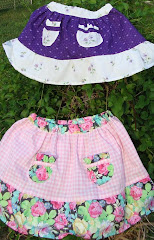









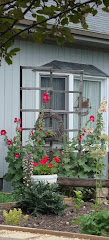


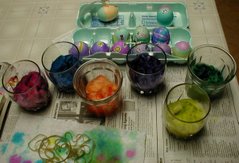

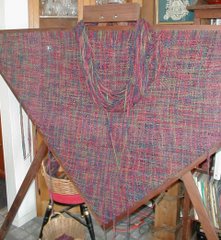
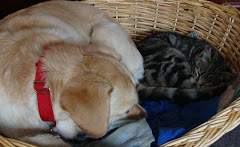

4 comments:
Great to see another post. Thought of you the past couple of days. After reading of the benefits of making your own broth. I made a trip to Sunrise for chicken backs and started broth in 4 crockpots. Plan to process it in the pressure canner.
Cindy C
We'll need to cull some older hens soon and I'm thinking of grinding the meat I want to freeze and putting the rest in the roaster oven for making broth and maybe some meat for canning.
Do you ever use the feet in your broth? It's a great addition but it always freaks me out when they're from one of our lead-shanked chickens...
Actually Carolyn, I want to try it with feet. In one article I read that is what makes the broth extra special for nutritional and health benefits.
Having the feet included is one good thing about raising our own. They do make the broth richer tasting. I wondered if Sunrise offered them -- only place I've seen them for sale is at the Oriental Food Market on 42 in H'burg.
Post a Comment